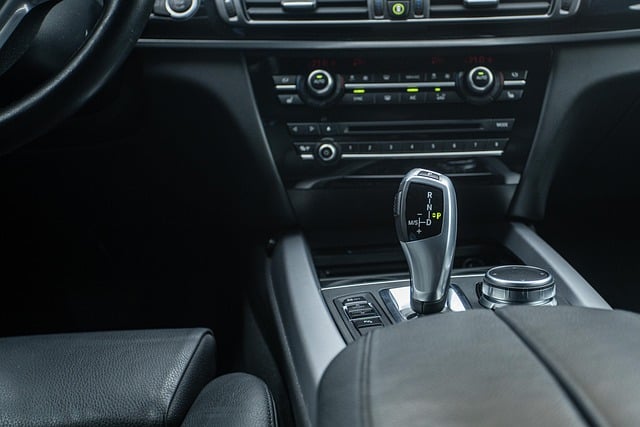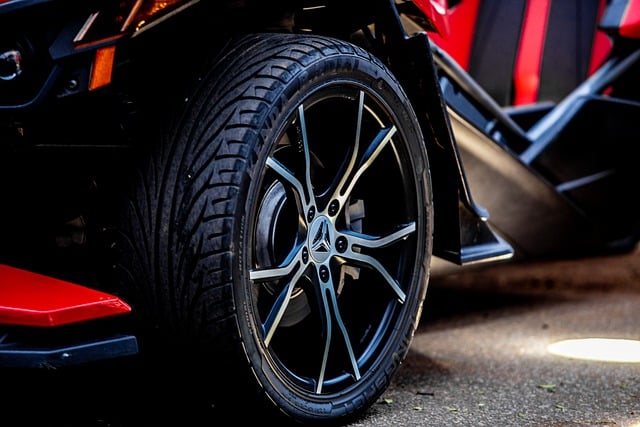Cold weather severely impacts car battery performance and longevity due to slower chemical reactions, corrosion buildup, and prolonged inactivity. Regular maintenance, garage parking, pre-conditioning, and monitoring with a voltmeter prevent excessive drain and prolong battery life. Avoiding extreme temperature swings, using optimal chargers, insulating terminals, and proactively replacing batteries (especially in cold climates) ensure reliable starts and prevent costly repairs.
Cold weather can significantly affect your car’s battery life, causing reduced performance or even failure. Understanding how cold temperatures impact batteries is crucial for maintaining reliable transportation during winter months. This guide offers 10 essential tips to protect your car battery in cold weather, including regular voltage checks, optimal charging practices, and strategic replacement to ensure you’re prepared before the first frost. Remember, a well-maintained battery can prevent costly breakdowns and keep you safe on the road all season long.
- Understand Cold Weather's Impact on Car Batteries
- Regularly Check Battery Voltage and State of Health
- Avoid Extreme Temperature Fluctuations for Charging
- Keep Your Car Battery Charged at Optimal Levels
- Use a High-Quality Battery Charger for Cold Climate
- Insulate Battery Terminals from Frost and Ice Buildup
- Replace Car Battery Before Cold Weather Sets In
Understand Cold Weather's Impact on Car Batteries

Cold weather can significantly affect your car’s battery performance and longevity. Lower temperatures cause the chemical reactions within the battery to slow down, reducing its ability to provide power efficiently. This results in slower cranking times and overall weaker electrical output. Over time, frequent cold exposure can lead to corrosion buildup on battery terminals, causing poor connections and further draining the battery. Moreover, if left unused for extended periods during chilly seasons, a car battery may completely drain, requiring eventual replacement. Understanding these effects is crucial when it comes to implementing strategies to protect your vehicle’s power source.
Regular maintenance, such as checking and cleaning battery terminals, can help mitigate these issues. Ensuring optimal battery charging by utilizing voltage regulators or smart chargers is essential, especially if you live in regions with prolonged cold spells. Drivers should also consider keeping their vehicles garaged during freezing temperatures to limit direct exposure to chilly environments. Additionally, pre-conditioning your car’s electrical system before starting the engine can aid in preventing excessive drain on the battery.
Regularly Check Battery Voltage and State of Health

Keeping an eye on your car battery’s health is crucial, especially during cold weather. Regular checks allow you to identify potential issues early on, preventing unexpected failures. Use a voltmeter to measure the battery voltage; a healthy one should read around 12.6 volts when idle. Any significant drop could indicate a problem or the need for a replace car battery. Additionally, monitor any signs of corrosion or leaks, as these can impact performance and shorten the battery’s lifespan.
By performing these simple checks, you’ll ensure your battery remains in top condition, providing reliable starting power in cold temperatures. This proactive approach can save you from being stranded in chilly conditions and potentially costly repairs.
Avoid Extreme Temperature Fluctuations for Charging

Extreme temperature fluctuations can significantly impact your car battery’s performance and longevity, especially during cold weather. To protect your battery, avoid sudden drops in temperature by steering clear of charging it at extremely low or high temperatures. For instance, don’t leave your vehicle plugged into a charger when it’s exposed to freezing conditions outside. Similarly, prevent exposing the battery to hot environments like an unventilated garage on a hot summer day right after charging.
Maintaining a steady and optimal temperature range ensures your car battery functions at its best, delaying the need for a replace car battery. This simple step can go a long way in extending the life of your vehicle’s most vital component, ensuring reliable starts during cold seasons.
Keep Your Car Battery Charged at Optimal Levels

Keeping your car battery charged is a crucial step in protecting its life, especially during cold weather. A well-maintained battery ensures your vehicle starts smoothly and efficiently. Regularly check the battery’s charge level using a voltmeter; it should read between 12.6 and 12.8 volts for optimal performance. If you notice any significant drop or signs of wear, consider getting it tested or replaced promptly to avoid unexpected failures in chilly temperatures.
Remember, a healthy car battery is key to preventing costly repairs and ensuring your vehicle remains reliable during winter. So, don’t neglect this essential component—it’s an easy way to keep your car running smoothly all season long!
Use a High-Quality Battery Charger for Cold Climate

In cold climates, a high-quality battery charger designed for low-temperature conditions can make all the difference in extending your vehicle’s battery life. Standard chargers may not function optimally in freezing temperatures, which can lead to overcharging or undercharging. A quality charger with temperature-compensation features ensures your car battery is charged efficiently and safely, preventing damage that could necessitate a costly replacement.
When considering a new battery for cold weather, look for chargers with built-in desulfators—devices that remove sulfur deposits from the battery plates over time. This process improves battery performance and longevity, especially in harsh environments. By using the right charger alongside regular maintenance, you can significantly prolong your car battery’s life, avoiding the need to frequently replace it during cold seasons.
Insulate Battery Terminals from Frost and Ice Buildup

To protect your vehicle’s battery from the harsh cold, insulating the terminals is a smart step, especially if you live in regions with frequent frost and ice. Frost and ice buildup on battery terminals can cause poor connections, reducing power output and potentially leading to an unsuccessful start. This problem is further exacerbated by cold weather, which slows down chemical reactions within the battery, making it harder for it to deliver the required energy.
One effective solution is to use insulation tape or heat-resistant compounds to cover the terminals. Regularly checking and clearing any ice buildup during cold spells is also crucial. Remember, a well-maintained car battery, including regular cleaning and inspection, can significantly extend its lifespan and enhance your vehicle’s performance, eliminating the need for an untimely replace car battery.
Replace Car Battery Before Cold Weather Sets In

Before cold weather arrives, it’s crucial to consider your car battery’s health, as extreme temperatures can significantly impact its performance. If your vehicle is older or has been sitting unused for a while, take the initiative and get your car battery replaced to ensure optimal protection during chilly seasons. A well-maintained battery is essential for keeping your car’s electrical systems running smoothly in both hot and cold conditions.
Regularly replacing your car battery before cold weather sets in can prevent unwanted breakdowns and keep your vehicle reliable. This proactive step, often overlooked but vital, will contribute to a smoother driving experience during winter months when electrical demand from heaters and defrosters increases.
Protecting your car’s battery in cold weather is crucial. By understanding the impact of extreme temperatures, regularly maintaining voltage, and employing strategies like using a suitable charger and insulating terminals, you can extend battery life. Remember, a well-maintained battery ensures your vehicle starts reliably during chilly seasons. Consider replacing your car battery before cold weather sets in for optimal performance.
